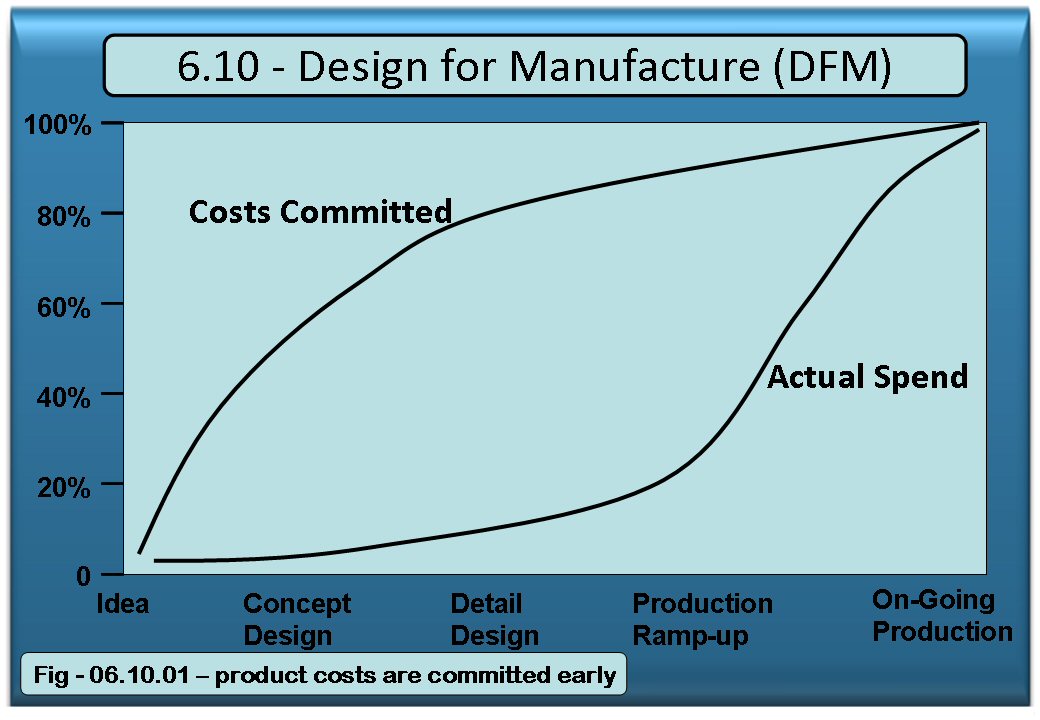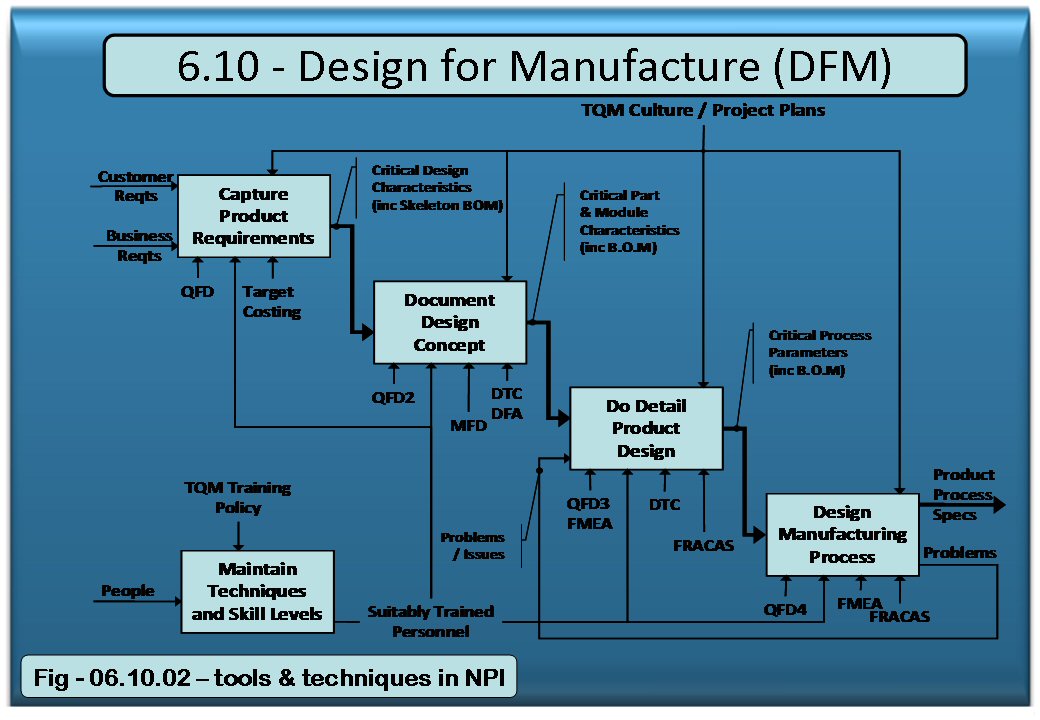6.10 - Design for Manufacture (DFM)
Overview
Over 70% of the costs associated with a product are determined early in the product’s design and development. By applying DFM principles early in product design when change is easier and less expensive, and overall cumulative spend is reduced.
Product Life Cycle Costs During NPI Process

Design for Manufacture [DFM] is an umbrella concept concerned with focusing design team effort on the cost effective use of parts and process to produce on time, high quality products that meet customer and business requirements. The principle characteristics present in successful DFM practice are:-
Teamwork
- Full-time co-located core team
- Principal stake-holders represented (i.e. Engineering, Marketing, Manufacturing, Suppliers and Customers)
- Early information (at Requirements Definition stage)
- Selected for team working and technical skills
Simultaneous (or Concurrent) Engineering
- Parallel design of product, its method of manufacture and the manufacturing system against clear customer requirements
- Equal product and process definition levels
· Rapid product / process / customer iterations
Use of Tools and Techniques
- Inject method, objectivity and structure continuous feedback
- Improved team communications and understanding
- Produce step change improvement in the quality of the design process by training the whole team together
- Need to be used selectively, at the right time and with the appropriate training
- Examples of effective tools for integration with the technical management of the project process are:-
- Quality Function Deployment (QFD)
- Failure Modes and Effects Analysis (FMEA)
- Design to Target Cost (DTC)
- Design for Assembly (DFA)
- Controlled Concept Convergence (Pugh Matrix)
The relationship of the above support tools is shown below:-

Professionally Managed Design Process
- Clearly defined and visible with logical phase for review handover, sign-off and quality audit
- Planned, monitored and controlled using sound project and programme management principles
The DFM concept complements the implementation of a simple low NVA organisation approach to the product introduction process based on multi-disciplinary teams and matrix-management methods to give:-
- Reduced Product Information leadtime
- Quality products at low cost
- Improved manufacturability
|
- Improved reliability and quality of performance
- Reduced engineering change
|